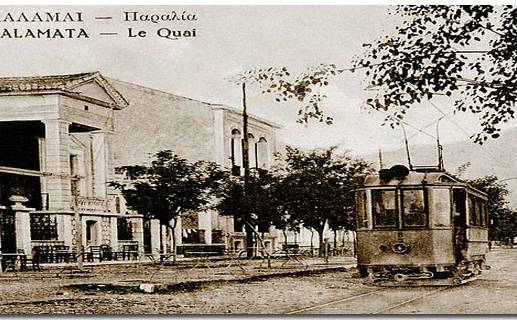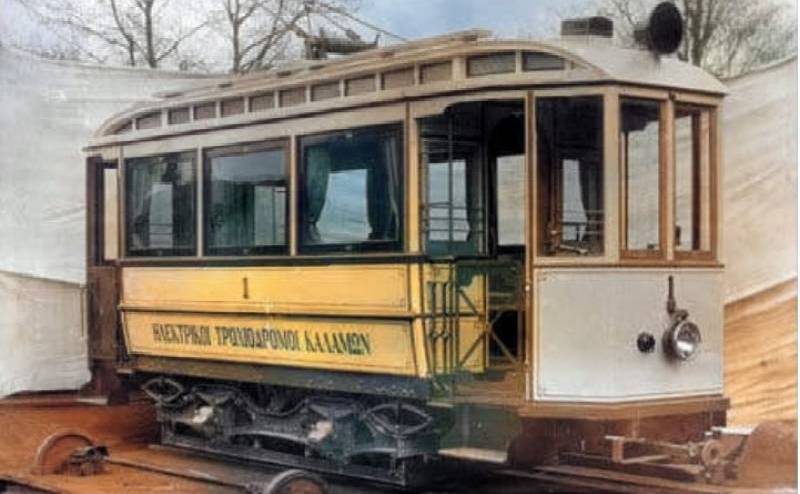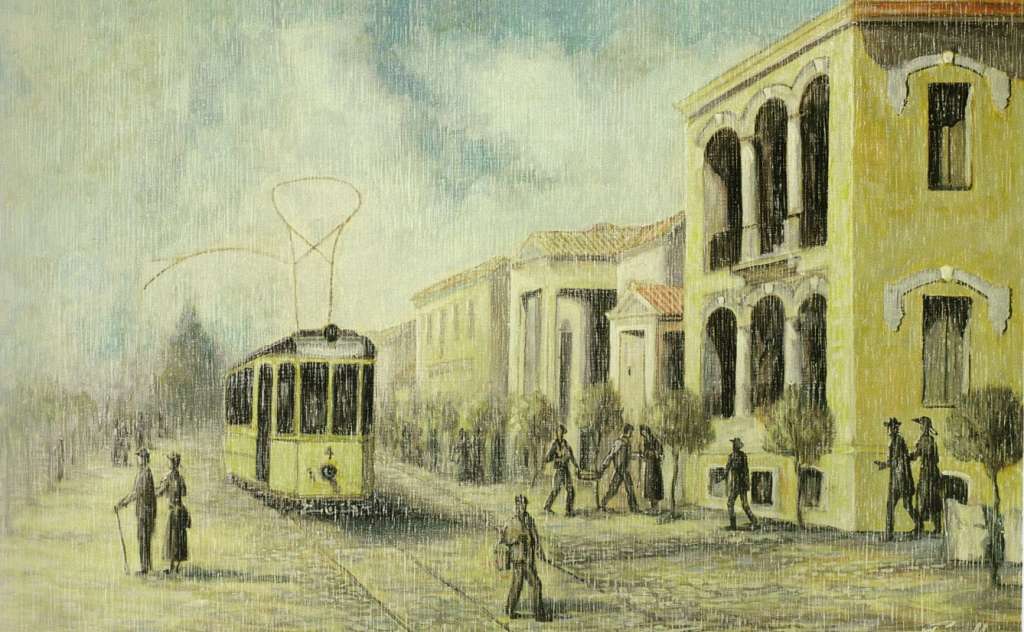The Kalamata tram
During the late 19th century, the need for a transport connection between the centre of Kalamata and the beach (as a result of the economic and commercial development of the city) led to the construction of an electric tram network. The first attempts to build it began in 1898, during Petros Kapetanakis’ mayorship, but without any positive result. Finally, in January 1908, during Benaki's term as mayor, the Municipality of Kalamata granted the contractor engineers G. Sekakos and Ippokrates Apergis the construction and operation of an electric tramway that would connect the upper town with the beach. The Municipality bought a plot of 1,000 sq.m. north of the "Jean and Ross" Wine and Spirits factory to install the company's electricity production plant. In April of the same year (1908), the large commercial ship "ARARAS" arrived from Antwerp, Belgium, at the city port with the necessary equipment for the construction of the tram.
The yellow tram of Kalamata operated from 1910 to 1940. The tram was used by the company of Hippocrates Apergis ("Electric Railways of Kalamon-Kalamata" until 1929 and then bought by the wealthy Stasinopoulos family ("Stasinopoulos and Co."). Finally, in 1939, the contracting company declared the cessation of the city's tramway service. Hence, the Municipality of Kalamata decided to dissolve the contract by announcing the company bankrupt. Thus, after 30 years of continuous operation, the Kalamata tramway ceased operation on November 25, 1939, or the winter of 1940. When the Italians arrived in Kalamata in 1940 (Greek-Italian war), they took the tram cars and transported them to their war industries. They also stripped the rails and cut them into two-metre beams, which they set up along the beach, fearing a possible ally landing.
The tram line was quite long, with sidings at some points for crossings, and opened in April 1910, with 24 services per day (during the summer months) and 20 services (during the winter months). Based on our information, in the first three years of its operation, 700,000 tickets were "cut", while in the next five years the number reached 1,500,000! The tram had two engines (one in front and one in the back) and consisted of 6 two-axle carriages with 16 seats manufactured by “Siemens AG”. The seats were on either side, in the form of wooden benches, while there was space for standing passengers in the middle. Also, along the carriages, there was a rope to which a bell was tied so that the passengers could notify the driver of their disembarkation, while there was also a collector.
The route followed by the tram daily was as follows: Its starting point was Fragolimna Square. It then crossed Chrysostomos Meletiou Street and exited on today's Ypapantis Street, going downhill towards 23rd March Square and the main Aristomenous Street. In a straight line, it reached the beach, passed in front of the Customs House and came out on Navarinou Street, where it crossed beyond the "Panellinion" for about 500 metres. The tram returned from Navarinou Street, reached the height of Faron Street and went straight up to Fragolimna Square, where it ended.
At this point, we should refer to the fact that in order for the rails of the tram line to pass, three buildings of historical value had to be demolished. The first was the church of Agios Athanasios (also known as Agio-Thanasakis), which belonged to the Tzanes family and was located at the current intersection of Ypapantis and Chrysostomou streets. It was a 13th-century temple where the double-headed eagle symbol stood out at its entrance. Its demolition started in 1908 and was completed in 1916, while many residents were against this act. All the historical objects of the church were moved next door to where the Military Museum of Kalamata is today, as well as the "twin" church of Agioi Nikolaos Fragolimna and Athanasios Tzane.
The second building that was "sacrificed" in 1910, on the altar of evolution, was the great historical Arapalis well on Ypapantis Street, in the well-known cafe of Tavoularidis. Finally, the so-called "Seismograph" was demolished due to its age and possible strong vibrations from the passage of the tram. The "Seismograph" was a minaret-remnant of the Turkish occupation where every evening, the imam climbed up and, after ringing the bell, called the believers of Muhammad to pray to Allah. The tower was located east of the church of the Holy Apostles, in the area where the well-known "Quilt shops" were later established. Later, a seismographic company installed a seismograph on the tower.
(Some of the information was taken from the Best TV show, "THE OLD KALAMATA", V. Maniatis, 1st Cycle, Episode 3, "The Tram".







